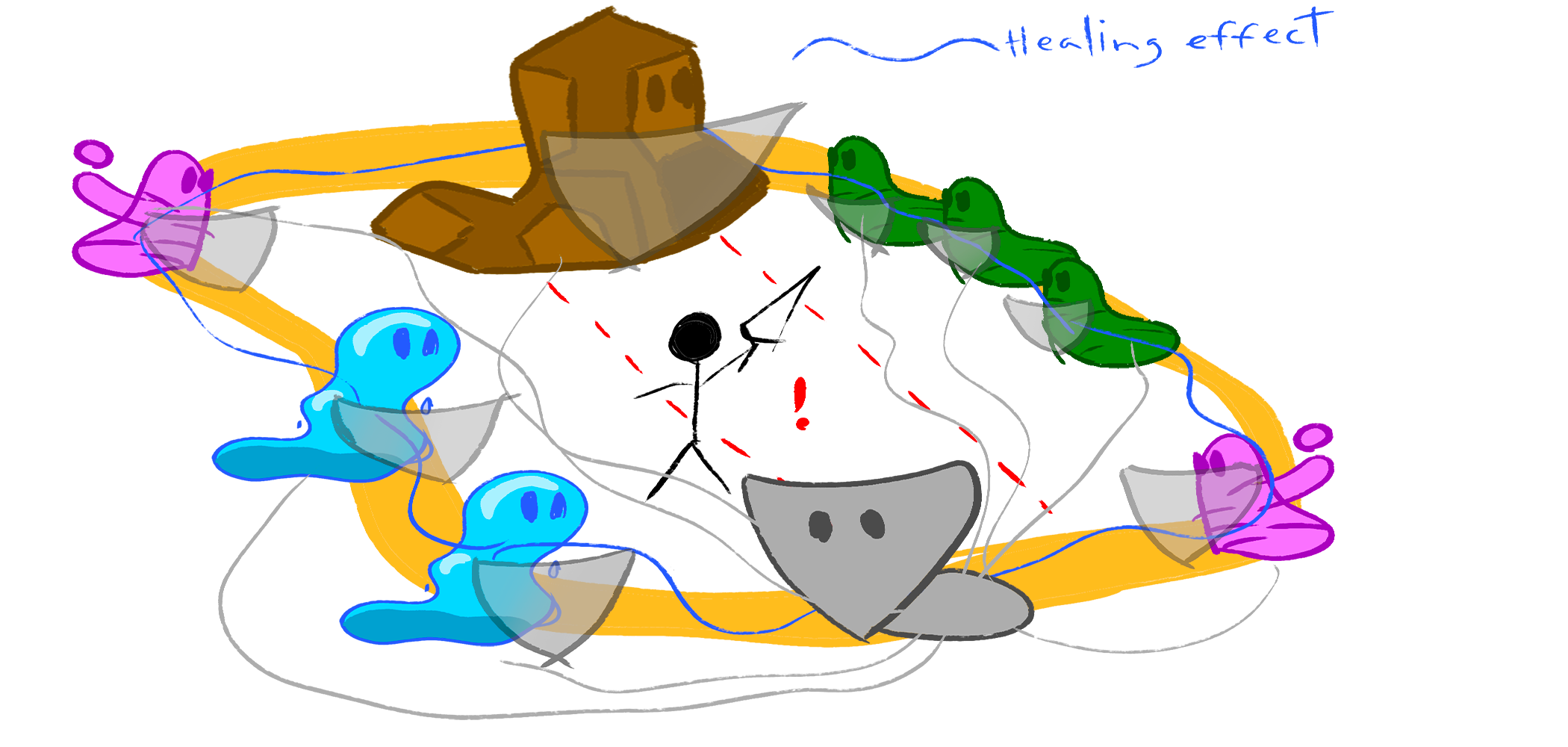“Wall” Enemy Design
The game mechanic is a type of enemy behavior that encourages the player to stay on the offensive and avoid being surrounded. When these enemies get within a certain range of the player, they will connect with each other to form a wall, effectively trapping the player in place. While trapped, the player will be bombarded by attacks from all sides, making it difficult to fight back or escape. However, if the player can take out each enemy before they connect, they can prevent the wall from being formed and avoid being trapped.
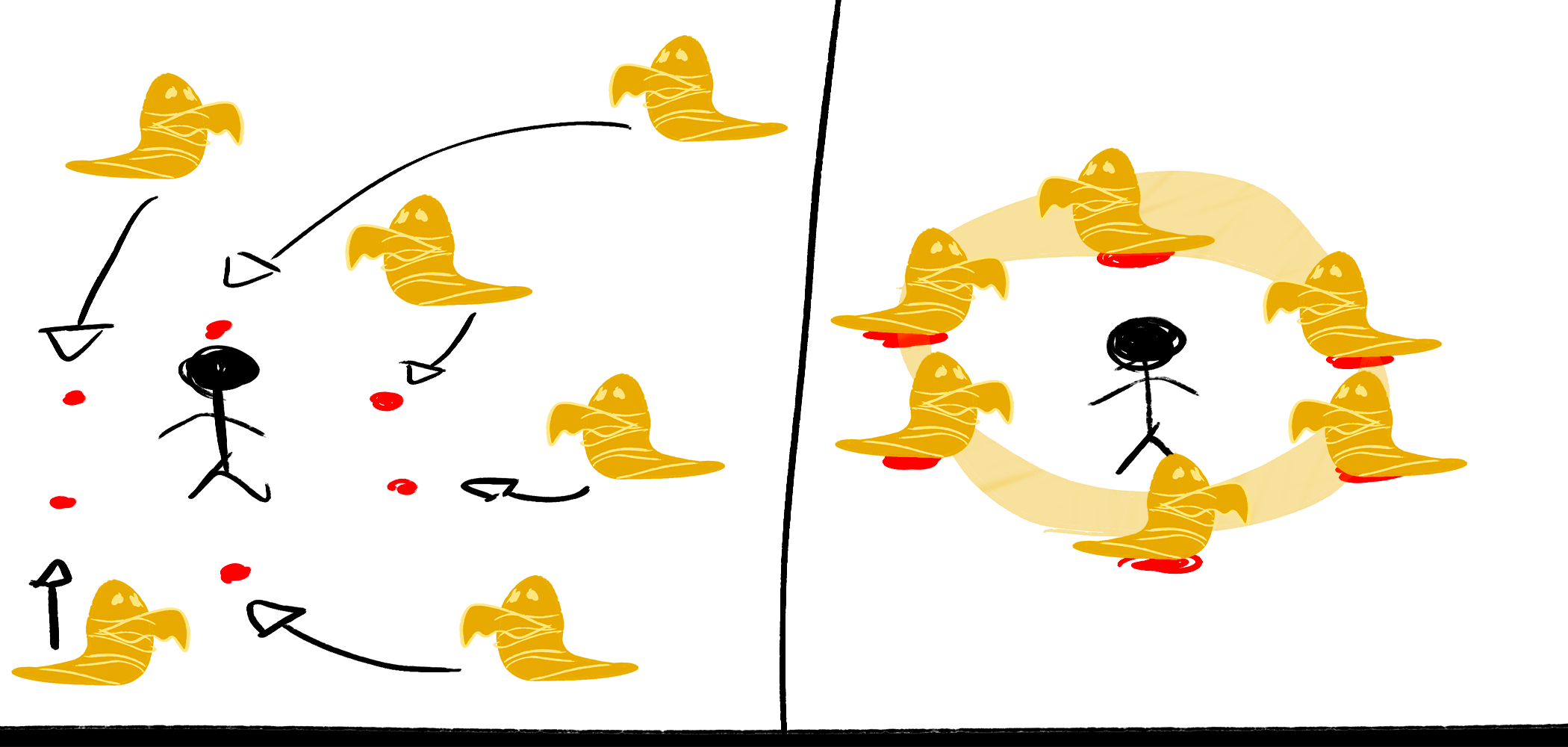
Influence the Combat approach
The main goal of this design is to explore how can we “force” the player to adopt a certain combat strategy, namely, to be as offensive as possible to push the enemies back and avoid being trapped. Alternatively, the player could focus on a high mobility approach to evade the wall formation.
Functionality
- Enemies surround the player and connect to form a wall
- Wall cannot be passed through
- Enemies can still attack
- Player can attack each enemy to “crack” the wall using knockback effect their attacks have, therefore separating them and giving the player a chance top move away
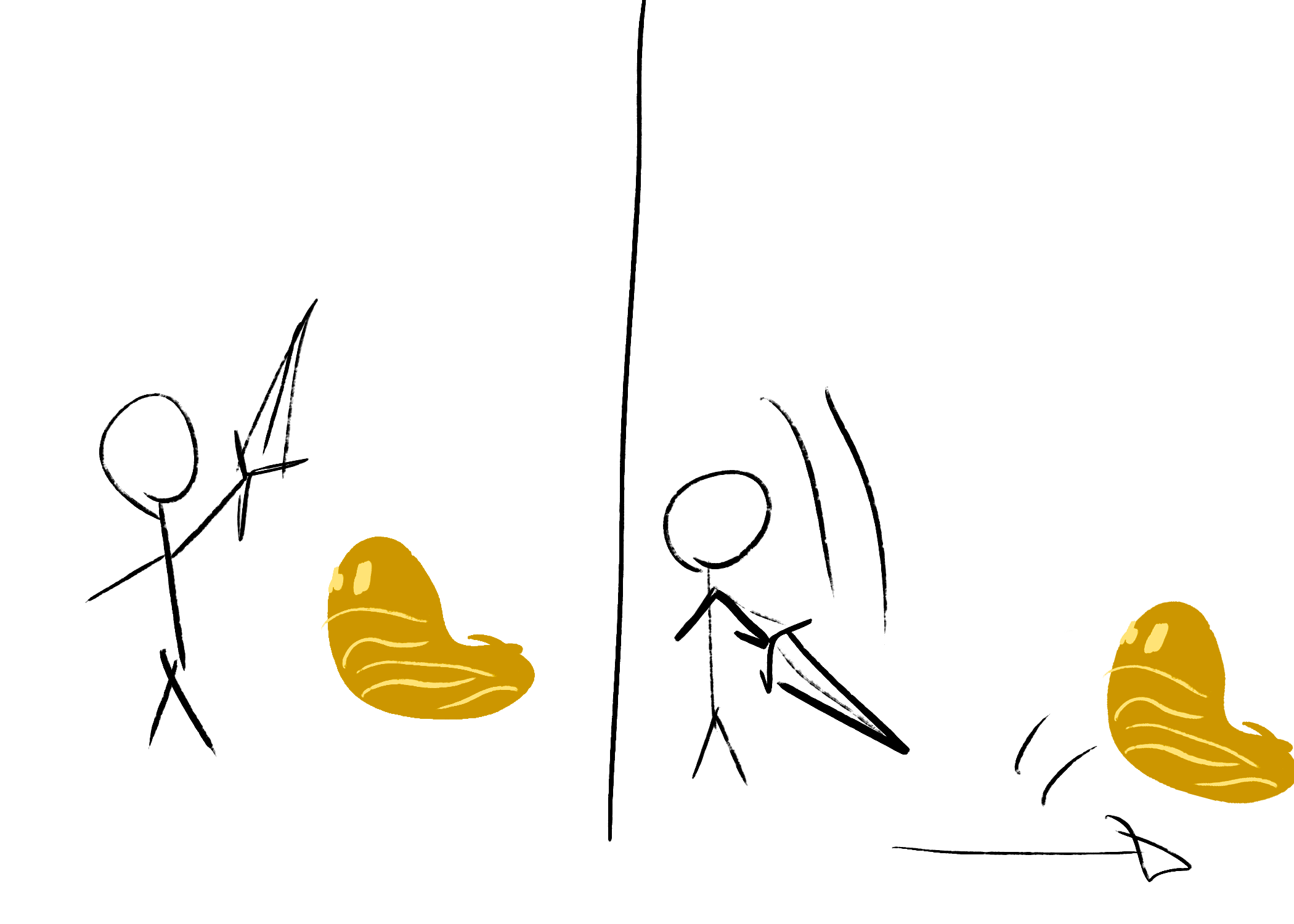
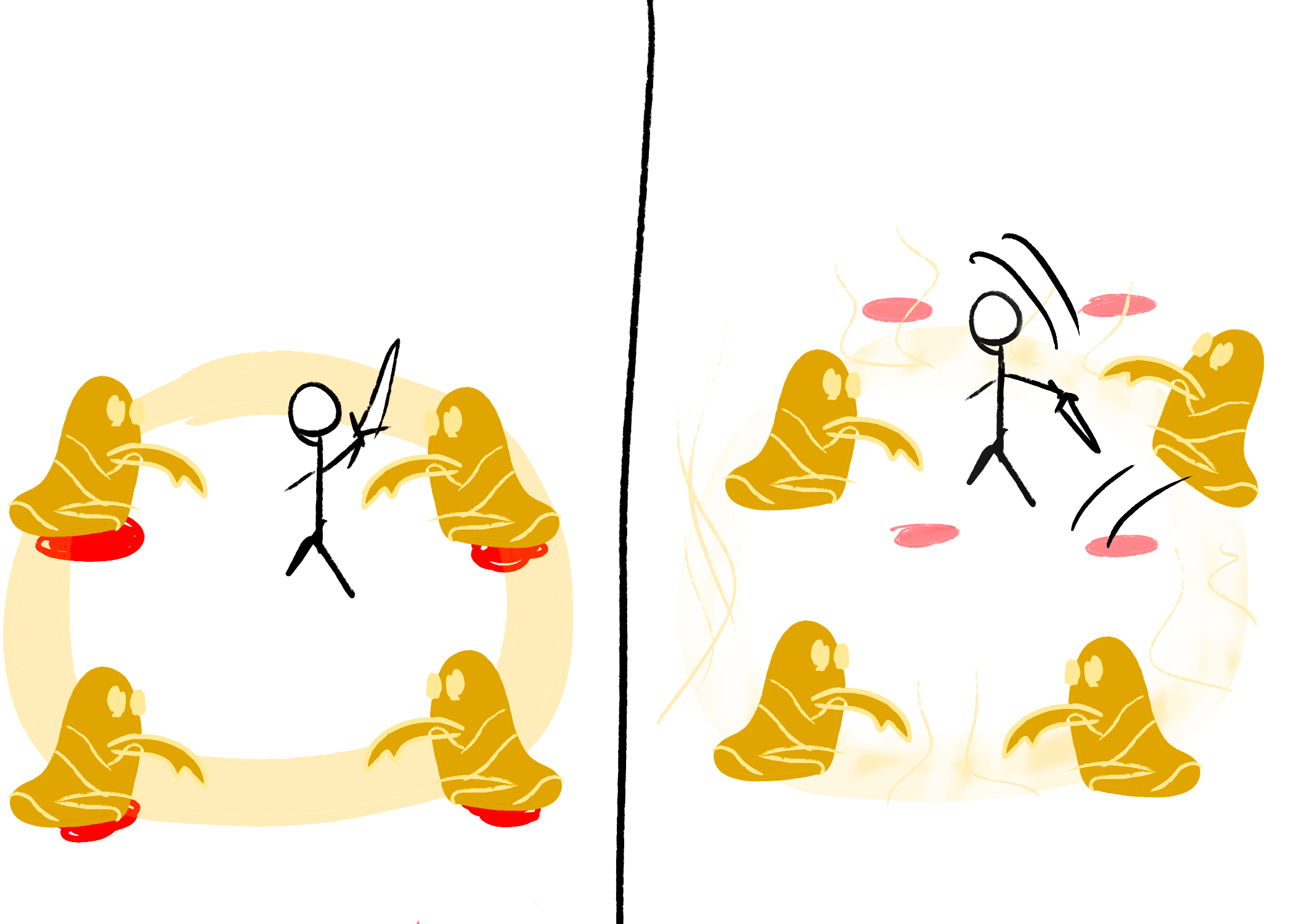
Design Premise
-
Enemy Spawning: Enemies will spawn on random or pre-defined locations on the map.
-
Enemy Movement: The enemies move towards the player once they have been spawned. Once they get within range of the player, they will connect with each other to form the wall.
-
Wall Creation: When the enemies combine to create this wall, they will attack normally, but because the player is trapped, their accuracy will naturally increase.

Expanding the design
Different types of enemies that require different strategies to defeat adds depth and variety to the gameplay experience. Here are some expanded examples of enemy types and their unique characteristics:
Resistant Enemies:
A type of enemy that are be resistant to certain types of attacks or damage. For instance, a fire-resistant enemy would take minimal damage from fire-based attacks but be vulnerable to ice-based attacks. This encourages the player to strategically choose the appropriate attack type or switch between different combat abilities to effectively defeat each enemy.
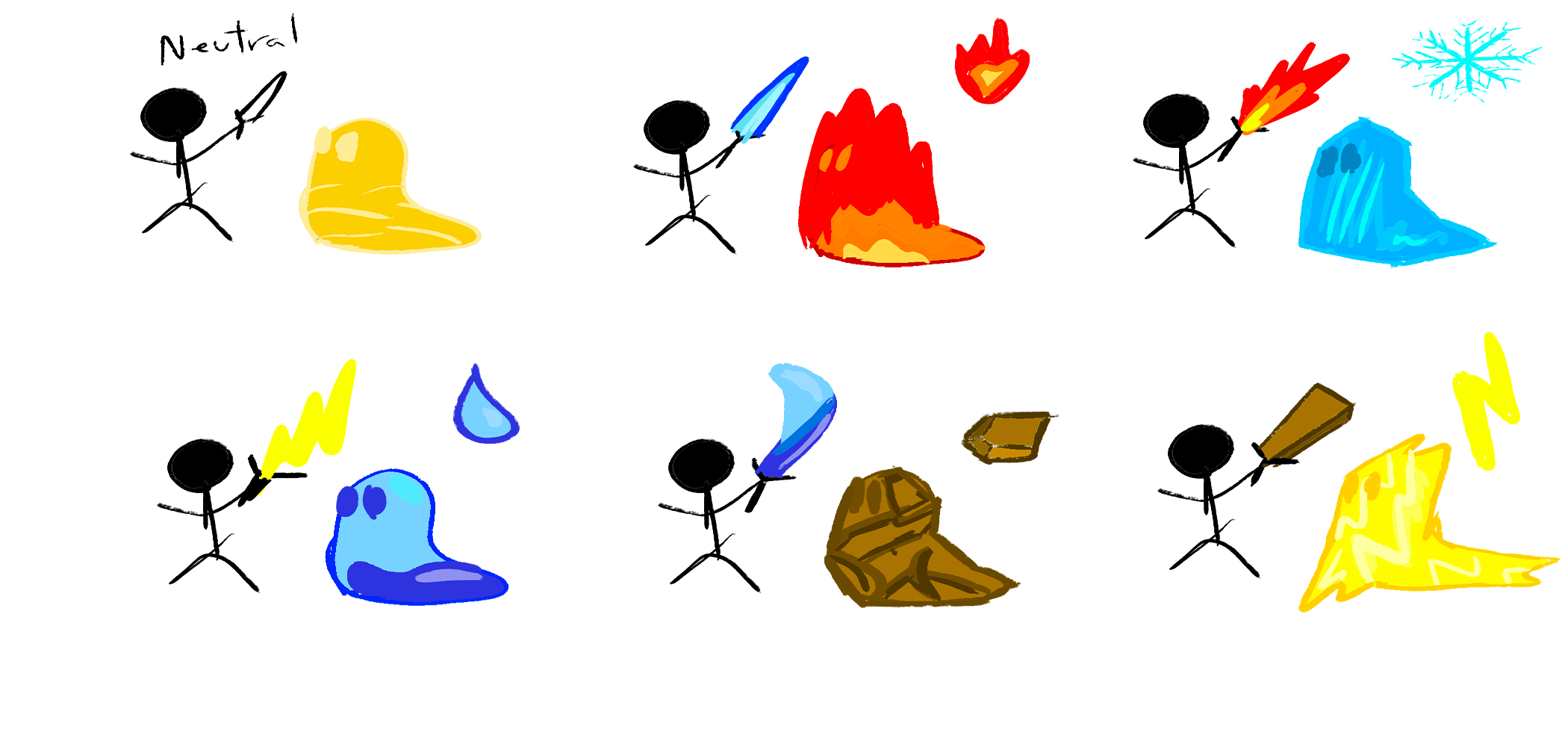
Sequential Enemies:
Certain enemies may need to be defeated in a specific order to render others vulnerable. For example, a group of enemies where one enemy acts as a shield for the others. Players must prioritize targeting and defeating the shielded enemy first, allowing subsequent enemies to become vulnerable to attacks. This introduces a layer of strategy and decision-making in choosing the optimal order of enemy elimination.
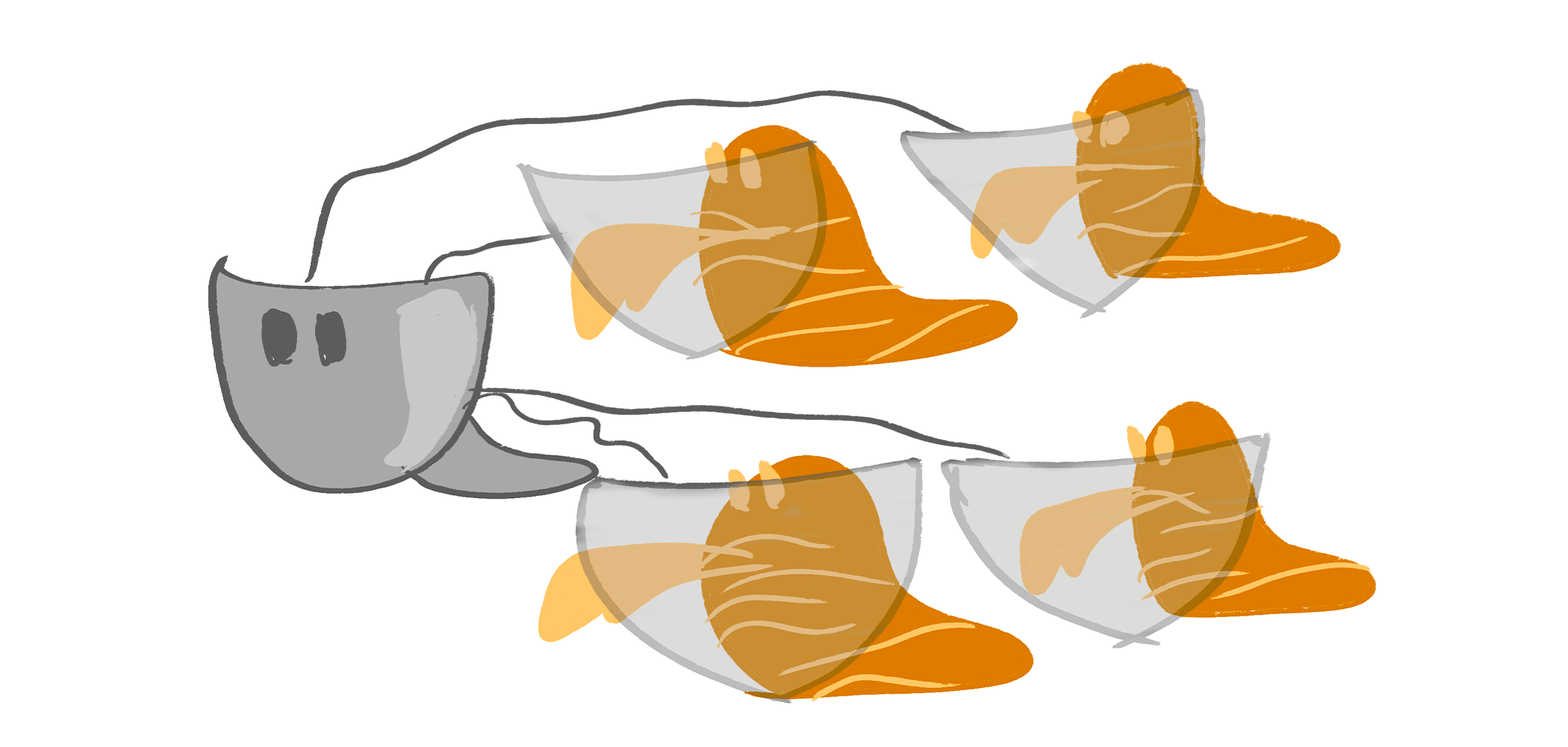
Close Formation Enemies:
These enemies are programmed to remain close to each other, and if they get close to the player, they will almost immediately form the wall. This forces the player to maintain a certain distance from these enemies to prevent them from combining into an impenetrable barrier. Players need to carefully manage their positioning and timing of attacks to prevent being trapped by the wall formation.

Ranged Wall Enemies:
These enemies can create a wall within a much larger distance from the player and possess ranged attacks. They may attack from a distance while slowly closing in on the player, gradually narrowing the available space. This adds a sense of urgency and requires the player to balance between offensive and defensive strategies to eliminate the ranged wall enemies and continuously avoiding the their porjectiles before they become overwhelming.
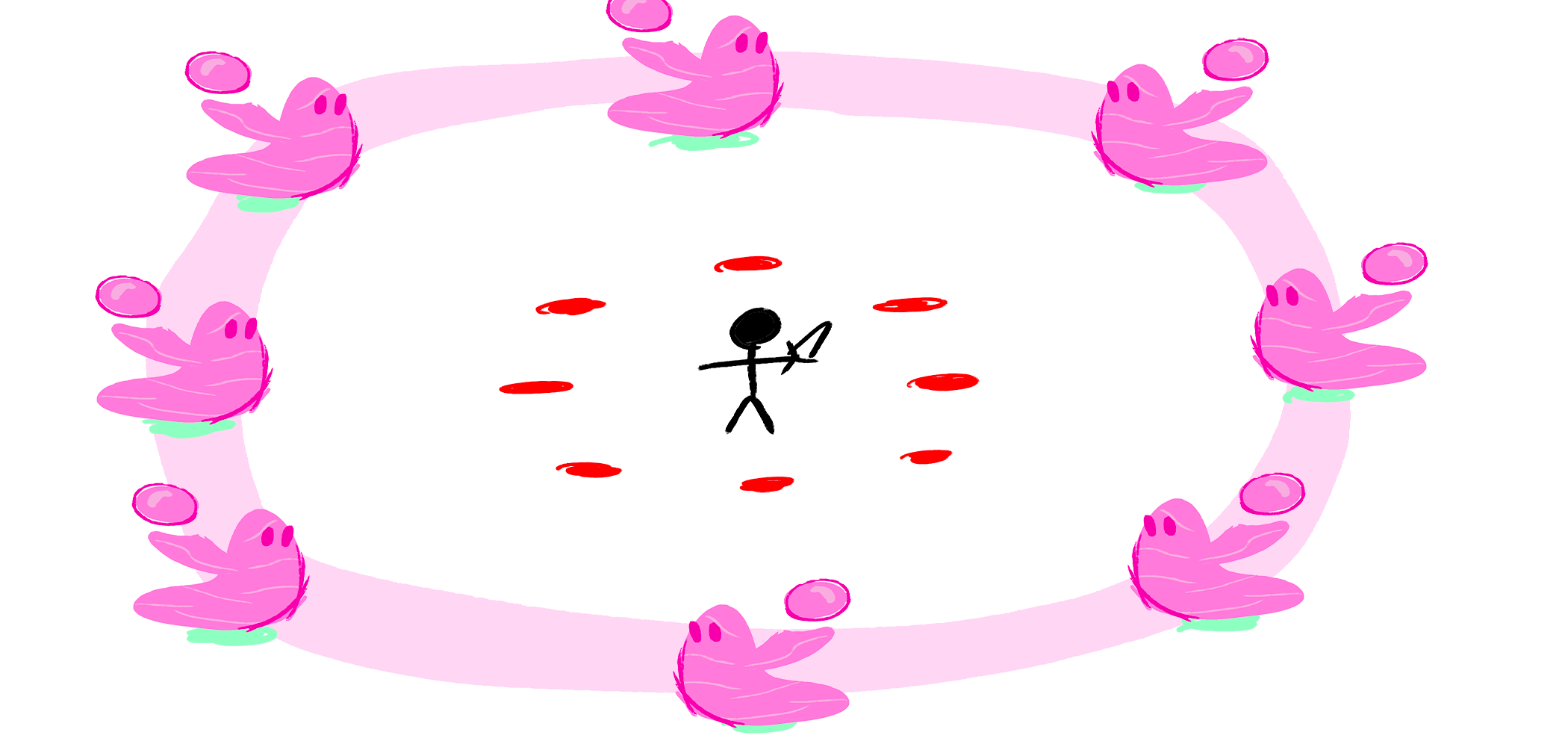
Unique Wall-Only Attacks:
A group of elite-like enemies than, when part of the wall formation, may possess unique attacks. For instance, when the enemies connect to form a wall these enemies unleash a powerful shockwave or create meteors that drop from the skies inside the wall area, a key aspect is that this special attacks would be telegraphed, giving the player the posibilitty to avoid them if they have enough skill. This introduces additional challenges during combat, requiring the player to anticipate and dodge these specialized attacks while still focusing on breaking down the wall. This also creates yet another variable to consider when focusing on the enemies as they provide a much larger threat.
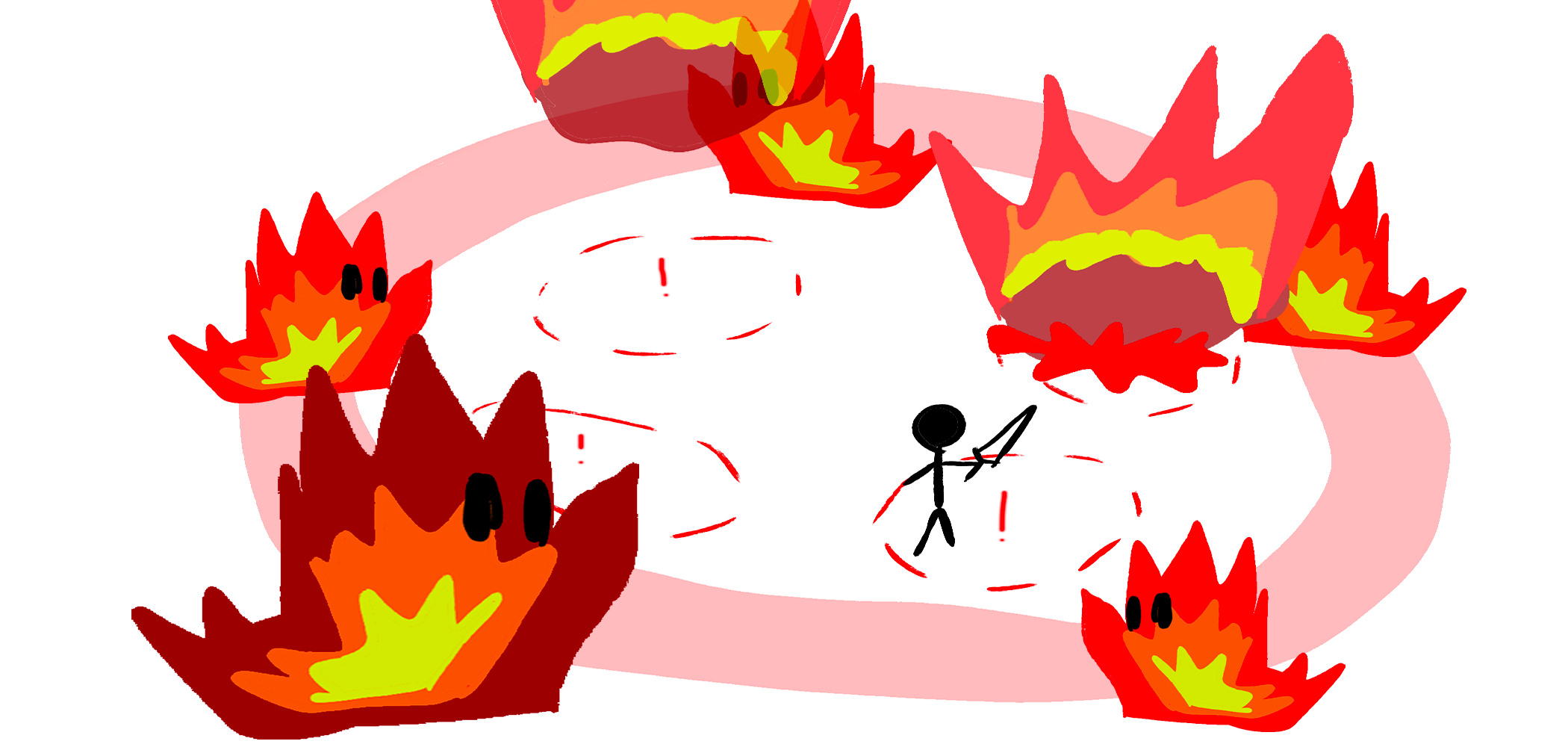
Additionally Mixing and matching different types of wall enemies introduces an additional layer of complexity and decision-making in combat encounters. By combining various enemy types within the wall formation, players must carefully strategize which enemies to prioritize and defeat first, all while maintaining an aggressive and mobile playstyle.
Strategic Prioritization:
The mixed wall formation could consist of different enemy types with varying strengths and weaknesses. Players must assess the situation and identify the most pressing threats. For example, they might prioritize defeating enemies that are resistant to their current attack type or enemies with particularly dangerous special abilities. This decision-making process adds depth to the combat experience and rewards players for their ability to adapt and strategize.
Dynamic “Walls” Composition:
This variation introduces unpredictable challenges that force players to think on their feet. For instance, a wall composed of resistant enemies might require the player to quickly switch between attack types to exploit the vulnerabilities of specific enemies within the formation. The dynamic nature of the wall keeps players engaged and requires them to constantly assess the situation and adjust their approach accordingly.
Synergizing Abilities:
Some wall enemy types will possess abilities that synergize with each other, that will enhance the overall strength of the wall formation. For example, one enemy who shield the rest of the group and makes them invulnerable, while another enemy within the wall might have a healing ability. This synergy makes the wall more resilient and challenging to break through. Players must identify and eliminate enemies with such synergistic abilities to weaken the wall and increase their chances of success.
